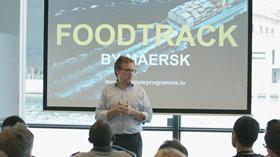
Maersk Growth’s FoodTrack programme provides support for businesses wanting to accelerate an idea within the AgTech space, with a focus on food loss and waste.
What inspired the Maersk Growth venture?
A: Growth is the Corporate Venture arm of Maersk. We accelerate and invest in teams and technology of the future. We are building the next wave of our integrator vision by combining entrepreneurship with the power of Maersk.
Could you explain the Maersk Growth FoodTrack programme?
A: FoodTrack by Maersk is not a training or traditional acceleration programme (we e.g. don’t require equity in exchange for participation), it’s a programme where we cooperate closely with the start-ups to help them progress and to validate a potential Maersk Growth investment. The participantsthereforetend to be beyond commercial application and well into revenue generation.
How much involvement have you seen with projects that impact the fresh produce sector in both editions? Could you provide examples
A: Several of the start-ups havean involvementwith fresh produce, whether it’s in connection with preserving, tracking e.g. temperature during shipping or a marketplace. This is representative for FoodTrack by Maersk and many of the start-ups within the AgTech space as a whole. The perishable nature of fresh produce means that extending shelf life, reducing spoilage and/or being able to reach more markets and customers carries a considerable value-add, which potentially inspires entrepreneurs.
What do you see as the key areas in which food loss can be reduced in the value chain?
A: Each step of the food value chain or food system can be improved upon. Yieldoptimisation, access to immediate cooling and storage, innovative packaging and preservation, flexible & efficient transportation and effectivemarket placesare examples of categories. There are subsets of these and each needs an intense focus, but where we see the biggest possible impact is when you drive adigitisationand value chain approach, which enables not onlydata drivensupply chain decisions, it alsoensurethat you don’tsub-optimisethe individual steps, and through that either miss out on opportunities in the step before and after, or worse create bottleneck/value destroyers in the adjacent steps.
p.p1 {margin: 0.0px 0.0px 0.0px 0.0px; font: 12.0px 'Helvetica Neue'}



